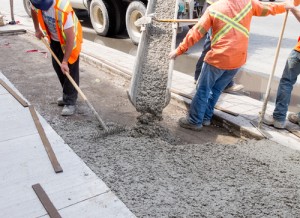 Cement is such a ubiquitous building material that we tend to take its current form for granted. Yet cement use in construction has a history dating back thousands of years, and in that time the material has undergone numerous changes and improvements. Today, cement continues to evolve for the better.
Cement is such a ubiquitous building material that we tend to take its current form for granted. Yet cement use in construction has a history dating back thousands of years, and in that time the material has undergone numerous changes and improvements. Today, cement continues to evolve for the better.
The Origins of Modern Cement
Cement was produced in many ancient societies using locally available natural materials. Egyptians used gypsum, while the Greeks and Romans blended limestone with sand to make their cement. The Romans eventually discovered they could change the properties of their cement by adding other materials. One of these materials was volcanic ash known as pozzolana. The addition of this ash created a cement that could set under water, making it useful for building harbors. In fact, concrete made from this cement resists salt water better than today’s concrete.
The most common cement used today, Portland cement, came from a different source. Portland cement evolved from the cements used in Britain in the mid-19th century.
The Future of Cement Use in Construction
Researchers at the Massachusetts Institute of Technology (MIT) have discovered a way to make Portland-cement concrete both more durable and more eco-friendly.
The conventional cement formula uses between 1.2 to 2.2 parts of calcium for every 1 part of silica, but 1.7 parts of calcium is the standard. MIT researchers found that decreasing the calcium content to 1.5 doubles the resulting concrete’s resistance to cracks.
Better yet, switching to a cement formula that uses 1.5 parts calcium could reduce the carbon dioxide emissions that come from cement production by up to 60 percent. That’s no small improvement, considering the cement industry alone is responsible for some 5 to 10 percent of the world’s carbon dioxide production.
A more durable cement also means less concrete will be needed to repair and replace damaged structures, further reducing cement production’s environmental impact. Although this new formula performs well in the laboratory, it remains to be tested in real-world applications.
To stay on top of recent developments in cement use in construction, contact us at Construction Monitor.
